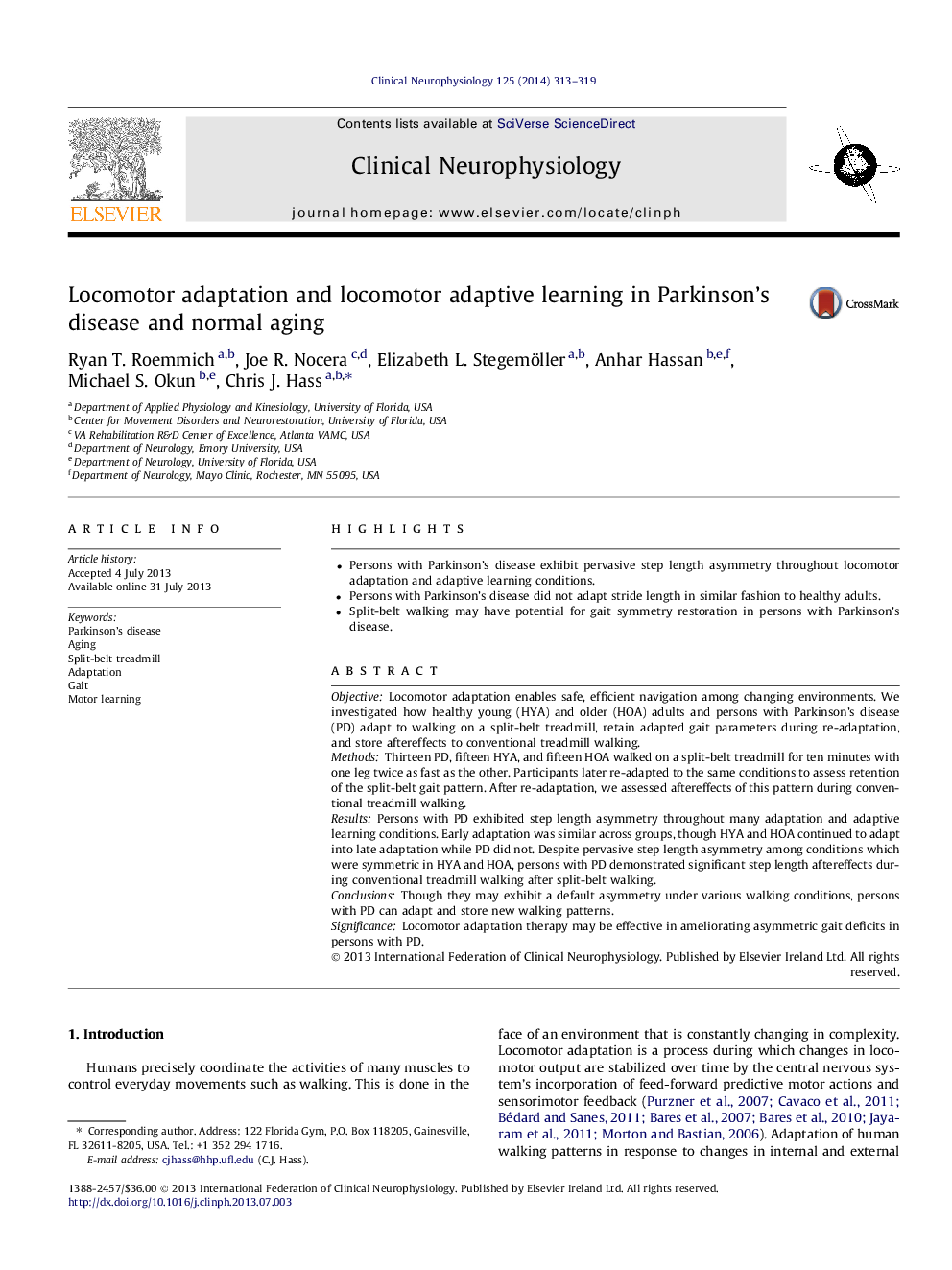| Article ID | Journal | Published Year | Pages | File Type |
|---|---|---|---|---|
| 3044400 | Clinical Neurophysiology | 2014 | 7 Pages |
•Persons with Parkinson’s disease exhibit pervasive step length asymmetry throughout locomotor adaptation and adaptive learning conditions.•Persons with Parkinson’s disease did not adapt stride length in similar fashion to healthy adults.•Split-belt walking may have potential for gait symmetry restoration in persons with Parkinson’s disease.
ObjectiveLocomotor adaptation enables safe, efficient navigation among changing environments. We investigated how healthy young (HYA) and older (HOA) adults and persons with Parkinson’s disease (PD) adapt to walking on a split-belt treadmill, retain adapted gait parameters during re-adaptation, and store aftereffects to conventional treadmill walking.MethodsThirteen PD, fifteen HYA, and fifteen HOA walked on a split-belt treadmill for ten minutes with one leg twice as fast as the other. Participants later re-adapted to the same conditions to assess retention of the split-belt gait pattern. After re-adaptation, we assessed aftereffects of this pattern during conventional treadmill walking.ResultsPersons with PD exhibited step length asymmetry throughout many adaptation and adaptive learning conditions. Early adaptation was similar across groups, though HYA and HOA continued to adapt into late adaptation while PD did not. Despite pervasive step length asymmetry among conditions which were symmetric in HYA and HOA, persons with PD demonstrated significant step length aftereffects during conventional treadmill walking after split-belt walking.ConclusionsThough they may exhibit a default asymmetry under various walking conditions, persons with PD can adapt and store new walking patterns.SignificanceLocomotor adaptation therapy may be effective in ameliorating asymmetric gait deficits in persons with PD.
